When Someone You Love Is Diagnosed with Diabetes
By Matthew Garza
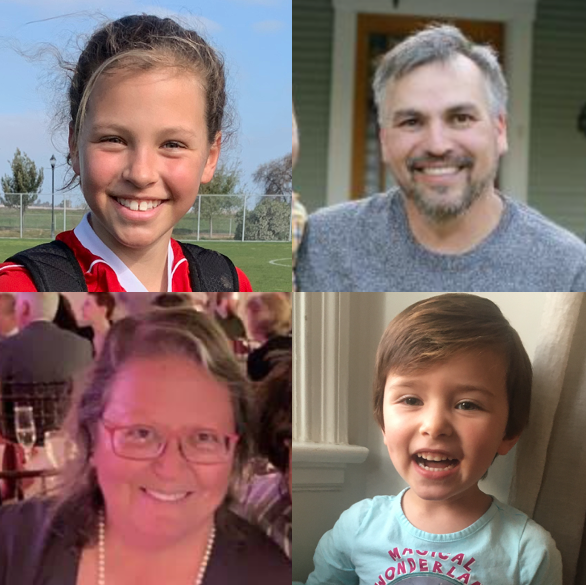 A diabetes diagnosis can be a scary thing, not just for the person who’s diagnosed but for that person’s loved ones as well. How can you support someone through a diagnosis and beyond, and what do people with diabetes need from their loved ones?
A diabetes diagnosis can be a scary thing, not just for the person who’s diagnosed but for that person’s loved ones as well. How can you support someone through a diagnosis and beyond, and what do people with diabetes need from their loved ones?
For many families, getting diagnosed with diabetes can feel overwhelming. Every person with diabetes has their own unique story, and thanks to amazing healthcare professionals, new therapies and technologies, and a multitude of resources, managing your diabetes and living a long, healthy, and happy life is absolutely possible.
I have seen first-hand how the support and care that loved ones provide is essential to living well with diabetes. Though I had grown up watching my grandma manage her diabetes – even helping her with her fingersticks and insulin injections – when my dad was diagnosed with type 2 diabetes last year, I was filled with questions and concerns.
I spoke with four families (including my own) at various stages of their diabetes journey to find out how they managed the diagnosis and asked them to provide insights to help others navigate this challenging time – including the various emotions that come with it, from frustration and uncertainty to confidence and hope.
Here is a quick look at the families:
-
David Garza is my dad. He’s in his 40s, was diagnosed with type 2 diabetes in 2020, and lives in Grandview, Texas. He has four kids; one in college, one in high school, a toddler, and me, and, since being diagnosed, he has learned so much from his brother and mom, who both have type 2 diabetes. His wife, Marnie, and I are there to help support him in any way we can.
-
Evelyn Armstrong is four years old and was diagnosed with type 1 diabetes in 2020. She lives in Baltimore, where she enjoys playing with her seven-year-old brother Owen, the neighborhood kids, and her new puppy. Her parents, Scott and Toni, help her manage almost every aspect of her diabetes.
-
Reese Goodenough is ten years old and was diagnosed with type 1 diabetes in 2016. She and her family live in Marin County, California. She is super active, loves sports, and her family stays involved with the JDRF Bay Area chapter. Wyeth Goodenough and Sarah Rafanelli, her parents, work hard to lift a lot of the challenges of diabetes off of Reese.
-
Eileen Opatut is in her 60s and was diagnosed with type 2 diabetes in 1994. She and her wife, Joan Garry, have three adult children and live in Montclair, New Jersey, just outside of Manhattan.
Click to jump down:
 For parents going through a child’s diagnosis, not understanding what’s happening can be terrifying. Evelyn’s parents, Scott and Toni, said the process leading to the diagnosis was one of the scariest times for them.
For parents going through a child’s diagnosis, not understanding what’s happening can be terrifying. Evelyn’s parents, Scott and Toni, said the process leading to the diagnosis was one of the scariest times for them.
“She just started being thirsty and having to go pee all of the time,” Scott said. “She started getting really upset about it, and I remember her clenching her fists and asking, ‘Why is this happening to me?’ And that’s when it struck us that there was something more wrong.”
If you notice the symptoms of hyperglycemia in yourself or in a family member, talk to a healthcare professional immediately to determine if tests can identify diabetes as the cause. The sooner a person is diagnosed, the quicker that person can learn to manage his or her diabetes. Early intervention can minimize future complications.
For some, a diabetes diagnosis might not come as a complete surprise, but neither may it seem like the most pressing event. Eileen was diagnosed with gestational diabetes during her first pregnancy, and then again when she was pregnant with twins a few years later. Unfortunately, she said, “that time it did not go away, but initially it was extremely easy to manage – I would just take metformin once a day.”
With young children, diabetes often took a back seat for Eileen and Joan. It wasn’t until later that her diabetes progressed and became more difficult to manage.
For her part, Reese, who was just six years old when diagnosed, said that she felt scared and confused, mostly because she didn’t even know what diabetes was.
The first few days in the hospital with Reese “were very chaotic and scary,” said Sarah, Reese’s mom. “Though Wyeth recognized some of the symptoms because a close friend’s daughter was diagnosed a few years prior, we really didn’t know anything about the disease or how to care for someone with diabetes.”
Being a parent of a child with diabetes, they discovered, meant feeling as though it’s your fault or you aren’t doing enough, even if that is not actually the case.
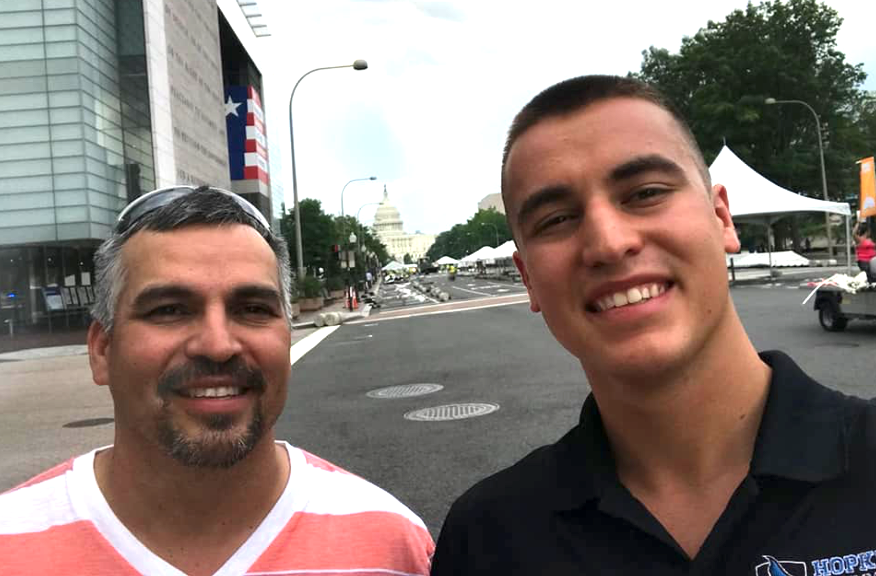 Finally, for my family, my dad’s onset seemed like it happened overnight. I remember getting a Facetime call from my dad last summer, and when I answered, I was immediately struck by how much skinnier his face looked and his lack of energy. He mentioned that he was constantly thirsty, always having to go to the restroom, and finding it hard to enjoy any food. Considering that I had just started working at diaTribe three months prior, I began ticking off a checklist of symptoms in my head – and with a family history of type 2 diabetes, I had been concerned this day might come. Before my dad saw a healthcare professional, we both suspected what the diagnosis would be.
Finally, for my family, my dad’s onset seemed like it happened overnight. I remember getting a Facetime call from my dad last summer, and when I answered, I was immediately struck by how much skinnier his face looked and his lack of energy. He mentioned that he was constantly thirsty, always having to go to the restroom, and finding it hard to enjoy any food. Considering that I had just started working at diaTribe three months prior, I began ticking off a checklist of symptoms in my head – and with a family history of type 2 diabetes, I had been concerned this day might come. Before my dad saw a healthcare professional, we both suspected what the diagnosis would be.
“It was like one day I didn’t have [diabetes], and then suddenly I felt just totally drained, tired, and not hungry,” my dad said. “I couldn’t do more than 15 minutes of work, or anything, without just wanting to lay down and not move at all.”
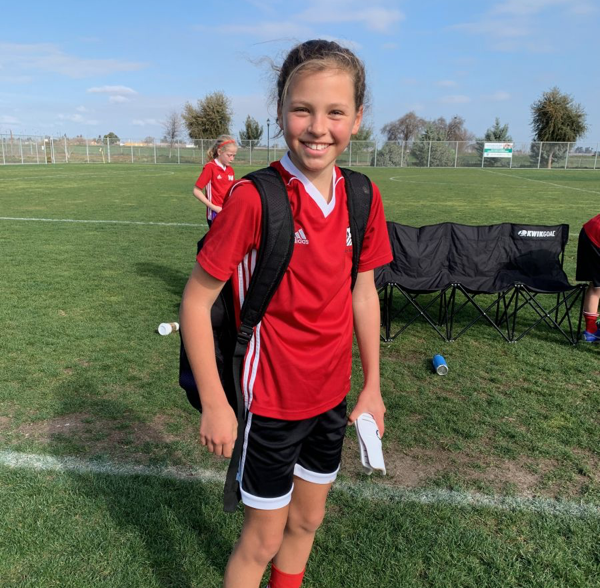 Whether you have been diagnosed or your loved one has, it’s important to know you’re not alone. When you are ready, there is so much information out there on managing diabetes as well as great healthcare professionals and incredible people who have been living with diabetes who can answer questions and provide support.
Whether you have been diagnosed or your loved one has, it’s important to know you’re not alone. When you are ready, there is so much information out there on managing diabetes as well as great healthcare professionals and incredible people who have been living with diabetes who can answer questions and provide support.
Reese’s mom, Sarah, put it this way: “After a few days, we just said, ‘Alright, we have to learn everything we can.’”
Whether you are learning how to manage your own diabetes or learning how to help someone manage theirs, getting answers is key. You might have questions about the medication options or things specific to insulin, like how and where do you inject it? You might have questions about diabetes technology, such as is it possible to get a continuous glucose monitor (CGM)? And even questions about life with diabetes, from the food you can eat to exercise to preventing long-term complications.
These are just some of the questions that came up for all of the families I interviewed. Writing down your questions so that you can keep track over time and remember to ask all of them during the health care appointments is a great tip. And don’t forget to write down the answers you learn, too. To read more, check out our Newly Diagnosed article series.
All of the families I interviewed turned to online resources and various diabetes organizations. diaTribe is a great place to start, and Adam Brown’s Bright Spots and Landmines: The Diabetes Guide I Wish Someone Had Handed Me is an excellent book filled with helpful tips. Other online sites can also be helpful: JDRF, Beyond Type 1, Beyond Type 2, and the American Diabetes Association are good places to start, as well as Diabetes Self-Management Education and Support programs.
Part of the initial steps also involve building a healthcare team that you can trust and lean on, including a primary care physician, endocrinologist, certified diabetes care and education specialist, and anyone else who helps you manage your diabetes.
From measuring glucose levels to watching your diet to making sure you exercise to navigating new medications, diabetes has real challenges, but they are manageable.
My dad told me the most challenging aspect for him was negotiating the medications. For him, part of the answer was learning the technology, especially how to use a continuous glucose monitor (CGM), which tracks his blood sugar every five minutes.
“Making sure I take [my medicine] consistently every day when I’m supposed to is a big challenge,” he said. “But having a CGM has been amazing. Being able to look at my glucose all the time – anytime I check my phone for a text I also check my glucose – helps keep me consistent and allows me to make corrections throughout the day to keep me in range.”
In addition, a CGM can help illuminate trends in your data to reveal how food, exercise, or other activities affect your glucose levels. This allows you to make both short- and long-term decisions that will keep you in range more often.
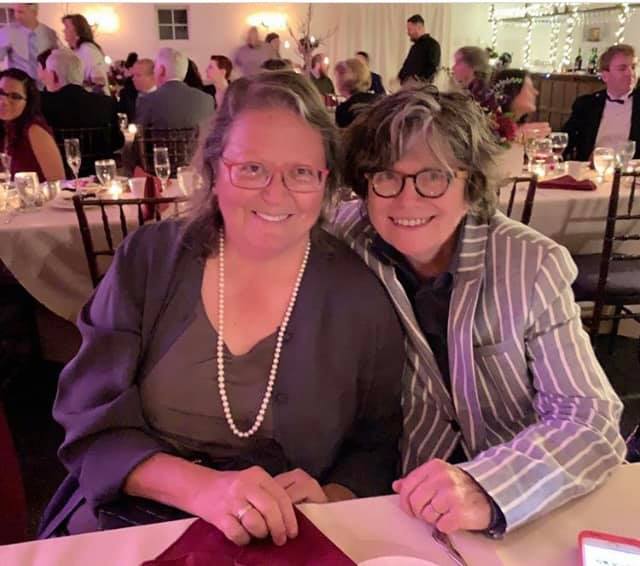 Eileen and Joan also mentioned this benefit: “Since Eileen [got a CGM], we’ve had more ‘AHA!’ moments about things that happened in the past,” Joan said. This included an illuminating moment when they realized that Eileen took a terrible fall probably because of severe hypoglycemia, which left her confused and disoriented. Click here to learn more about hypoglycemia, its signs, and how it differs from hyperglycemia.
Eileen and Joan also mentioned this benefit: “Since Eileen [got a CGM], we’ve had more ‘AHA!’ moments about things that happened in the past,” Joan said. This included an illuminating moment when they realized that Eileen took a terrible fall probably because of severe hypoglycemia, which left her confused and disoriented. Click here to learn more about hypoglycemia, its signs, and how it differs from hyperglycemia.
For children with diabetes, figuring out how to make sure they are eating the right food, staying active, and getting the right medicine and technology is important but daunting. When asked what she found to be most challenging, Reese answered right away, “It was definitely the insulin shots for me.”
Four-year-old Evelyn agreed that shots are the worst, especially having to get one every time she ate. Working with their healthcare team, Toni and Scott advocated early for getting Evelyn the right technology. They saw results quickly; in particular, getting an insulin pump was a huge improvement. Toni said, “Being able to take away the negative association of a shot with food was a game changer for Evelyn.”
One of the best ways that you can support your loved one is to be there as a support network. Especially for adults with diabetes, this might be enough.
“I’m pretty private,” Eileen said, “so I just wanted to take care of it myself.” Joan agreed: “I don’t have to remind Eileen about things; she makes her doctor’s appointments and does a good job.”
It’s more complicated with children, since the majority of diabetes management falls on parents. Which often includes injecting insulin shots, helping with diabetes technology (such as tracking CGM and insulin pump data), and making sure that they are getting the right food. Organizations such as Children with Diabetes offer more help.

Eventually, a routine emerges. Reese joked about how even now that she’s ten, her parents “pretty much still do everything for me,” and her dad is the “shot master.” Wyeth said, “Reese does an amazing job managing her diabetes, but as parents, we made the conscious decision to take the burden of management off of her as much as we can, especially in these early years.”
For people who are able to get a CGM – and for those who have a blood glucose meter with data sharing capabilities – sharing your glucose data with family members and care-partners can be an effective way to involve your support network.
My dad, David, has the Dexcom G6 CGM, and he shares his glucose data with me and Marnie. This feature allows us to monitor and watch his glucose from our own phones and alert him if he doesn’t realize he is going too low or too high – which is a concern since he works late hours and has a physically demanding job in a distribution center.
The feature can be especially valuable for parents whose children have a CGM because they are able to see their child’s glucose values updating continuously throughout the day. For more on data sharing, check out, “To Share or Not to Share: My Approach to Diabetes Data,” and “How to Coach Your Care-Partner on CGM Data.”
As common as diabetes has become, many misperceptions persist about what it is like to actually live with it.
Eileen and David both mentioned the stigma that exists for a person living with any diabetes type. Stigma produces feelings of shame, depression, and stress that can affect diabetes management, such as delaying or avoiding an insulin injection while in public. David said that even though he isn’t embarrassed to give himself an insulin shot in public, he knows many people who will only take medicine and inject insulin in private spaces for fear of being judged.
Eileen also mentioned the stereotypes that are often associated with diabetes. Common self-blaming assumptions, such as, “Well, I’m overweight,” or “I don’t exercise enough,” or “I’m a failure, and it’s all my fault,” can damage and derail someone’s efforts to manage their condition. These same judgments are sometimes also made by others.
One way that family members and friends can help is by understanding that diabetes is caused by a number of factors, many of which are outside of a person’s control. To learn more about diabetes stigma, watch these five amazing speakers (including Eileen’s wife, Joan Garry) discuss ways that we can fight back against it.
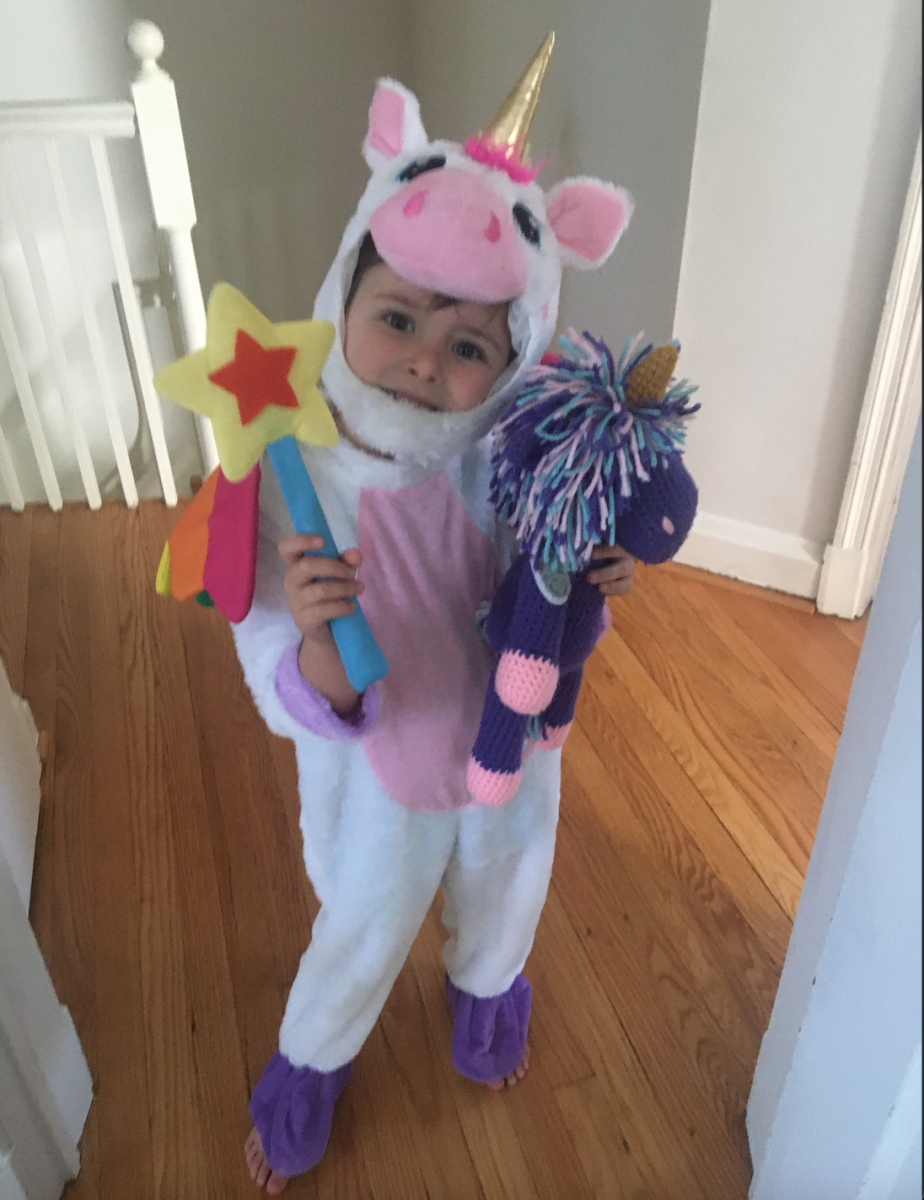 Evelyn’s parents, Toni and Scott, said they wished people who didn’t have a child with diabetes could know what it’s really like. “The reality of how much monitoring there is – how difficult it is to keep Evelyn in range and not go too high or too low,” Toni said. “When we tell people that Evelyn has diabetes, we get one of two responses. It’s either, ‘Oh my gosh, I am so sorry,’ because they know someone close to them with diabetes; or it’s, ‘Oh, okay,’ and they assume that after a little while things just return to normal. We wish people understood the gravity of Evelyn’s diagnosis.”
Evelyn’s parents, Toni and Scott, said they wished people who didn’t have a child with diabetes could know what it’s really like. “The reality of how much monitoring there is – how difficult it is to keep Evelyn in range and not go too high or too low,” Toni said. “When we tell people that Evelyn has diabetes, we get one of two responses. It’s either, ‘Oh my gosh, I am so sorry,’ because they know someone close to them with diabetes; or it’s, ‘Oh, okay,’ and they assume that after a little while things just return to normal. We wish people understood the gravity of Evelyn’s diagnosis.”
Joining a community (like online support groups – Facebook is a great place to start) or simply talking to other people who have diabetes can help the journey feel less lonely. Sarah praised the type 1 community they found when Reese was diagnosed: “They are very generous with time and resources. So many people reached out to share their stories or tips, and we took advantage of these reach-outs as often as we could.”
It can be frustrating, the families said, to encounter people who misunderstand what it’s like to live with diabetes because the information about diabetes is so limited and the media’s portrait is not always accurate.
“I don’t think there are enough stories of people with diabetes who live long, long lives,” Eileen said. Evelyn’s dad, Scott, added that more attention on the challenges is also needed. “Everything you see online, on Facebook or podcasts, is success stories of little five-year-olds with perfect A1Cs. And that’s not always the reality.”
Advice for the newly diagnosed
Each family had some parting advice. The road might be rocky at times, especially at first, but the future is full of hope.
“Diabetes is the infant you didn’t plan for,” said Toni. Scott expanded on that: “You will experience very similar feelings as bringing your first child home from the hospital – worry, stress, sleeplessness. Getting through this will require the same support systems, grace, and patience you found helpful in those moments. And remember that this child (diabetes) will grow up and mature too one day.”
For myself and my dad, leaning on a support system and taking a moment to center yourself was key at the beginning.
 “Try your best not to stress or panic,” my dad advised. “It is a manageable diagnosis. Diabetes medicines can help get your life back to a new normal quickly, and even small changes in your diet can help so much long term. We were really stressed at the beginning, but we feel much better after learning more.”
“Try your best not to stress or panic,” my dad advised. “It is a manageable diagnosis. Diabetes medicines can help get your life back to a new normal quickly, and even small changes in your diet can help so much long term. We were really stressed at the beginning, but we feel much better after learning more.”
Diabetes has been around a little longer in Reese’s family. “The beginning is incredibly hard, but we promise it gets better,” said Wyeth, “And the T1D community is really special, so be sure to get involved.”
“I’ve been living with diabetes for 26 years,” Eileen said, “I want folks to know that you can live with diabetes. It can be a bumpy ride, but the best advice I can offer is, ‘Learn everything you can, be smart, surround yourself with medical professionals you trust, and listen to their advice. Lastly, don’t hide your diabetes. Help all people with diabetes by being open with friends and family so we can reduce stigma one person at a time.’”








